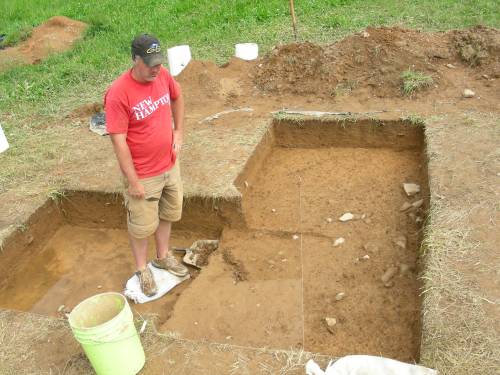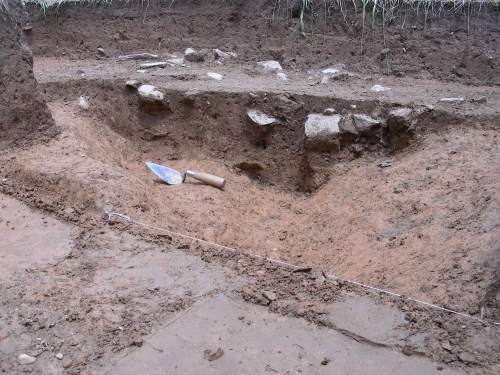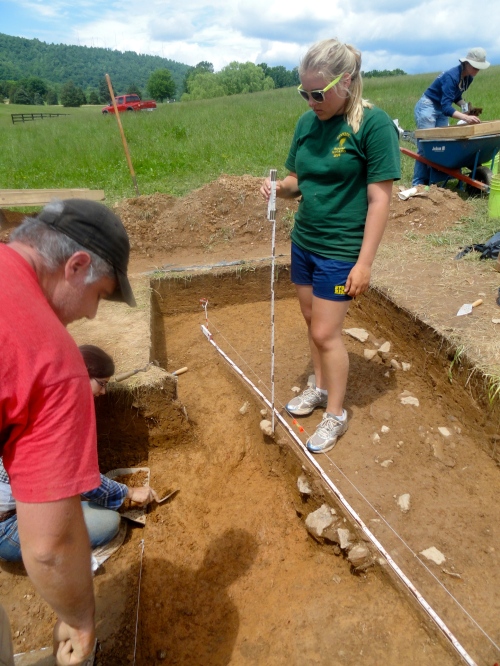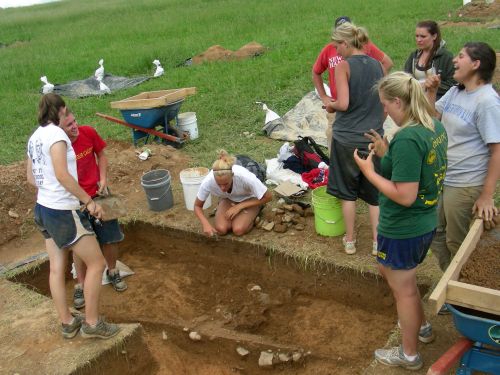Throughout the time we’ve spent at Morven Farm, we’ve uncovered some interesting artifacts. These artifacts help shape our knowledge of how the previous residents of Morven lived and interacted with one another.
The inhabitants of this farm, George Haden and his family, were tenant farmers for William Short. They most likely lived on Morven during the late 1700s/early 1800s. Throughout this time period, white cultural groups were making a name for themselves. They believed themselves to be superior to the Indians and black slaves. Judging by some of the artifacts we’ve found, the Hadens could fall into this category. Although they were only tenant farmers, their ethnicity allowed them to feel like they were part of a higher social class, on the same level as their landlord, William Short, and his friend, Thomas Jefferson. Some of the ceramics we’ve found on site, such as the Royal-edged whiteware, could point to this feeling of belonging to a higher social class. The inhabitants of Morven might have tried to show off their status by buying imported ceramics, so guests that came to their farm would be impressed.
Throughout the field school, we were looking for the foundation of the house. We were unsuccessful in that endeavor, but, however, in one of the units, we discovered a feature. A feature is a discoloration in the soil that could indicate the presence of a previous structure. Examples would be a post hole, the foundation of a house or maybe a cellar floor. We subsequently decided to follow the feature, opening up two units on either side of the first in order to see more of it. After mapping the floor and the profiles of the unit, taking Munsells of the difference in soil color, we divided the feature in half using small, hooked poles and string. We marked the feature in half so that only one side could be excavated at a time. This allowed us to see and map the profile of the feature. We took opening elevations with the total station, then began excavating the feature as a separate context.
Instead of shovel-shaving down a few tenths then evening it out with trowels as our excavating method, we only shaved off the dirt with trowels, thus allowing us to determine the exact shape of the feature. When excavating a large artifact, such as cow bone, we shave around it with a trowel, making sure the entire feature is kept even, then pedestal it and lift it gently out of the unit. We used this technique when excavating the pieces of the Dutch oven and cow bones.
Inside the feature, we discovered multiple shards of window and bottle glass, pearlware, creamware, stoneware, earthenware, nails, pieces of barrel strapping, copious amounts of charcoal, cow bones, an animal’s tooth and parts of what appears to be a Dutch oven. It’s possible that the feature was caused by a naturally occurring ravine in the field. We think that the previous inhabitants of Morven might have used the ravine as a midden, throwing their refuse into it then later covering it up. Because the ravine is a natural feature, it is not cultural. However, the artifacts inside and the way people used to use the ravine are cultural.
-Kira Sedberry ’14











